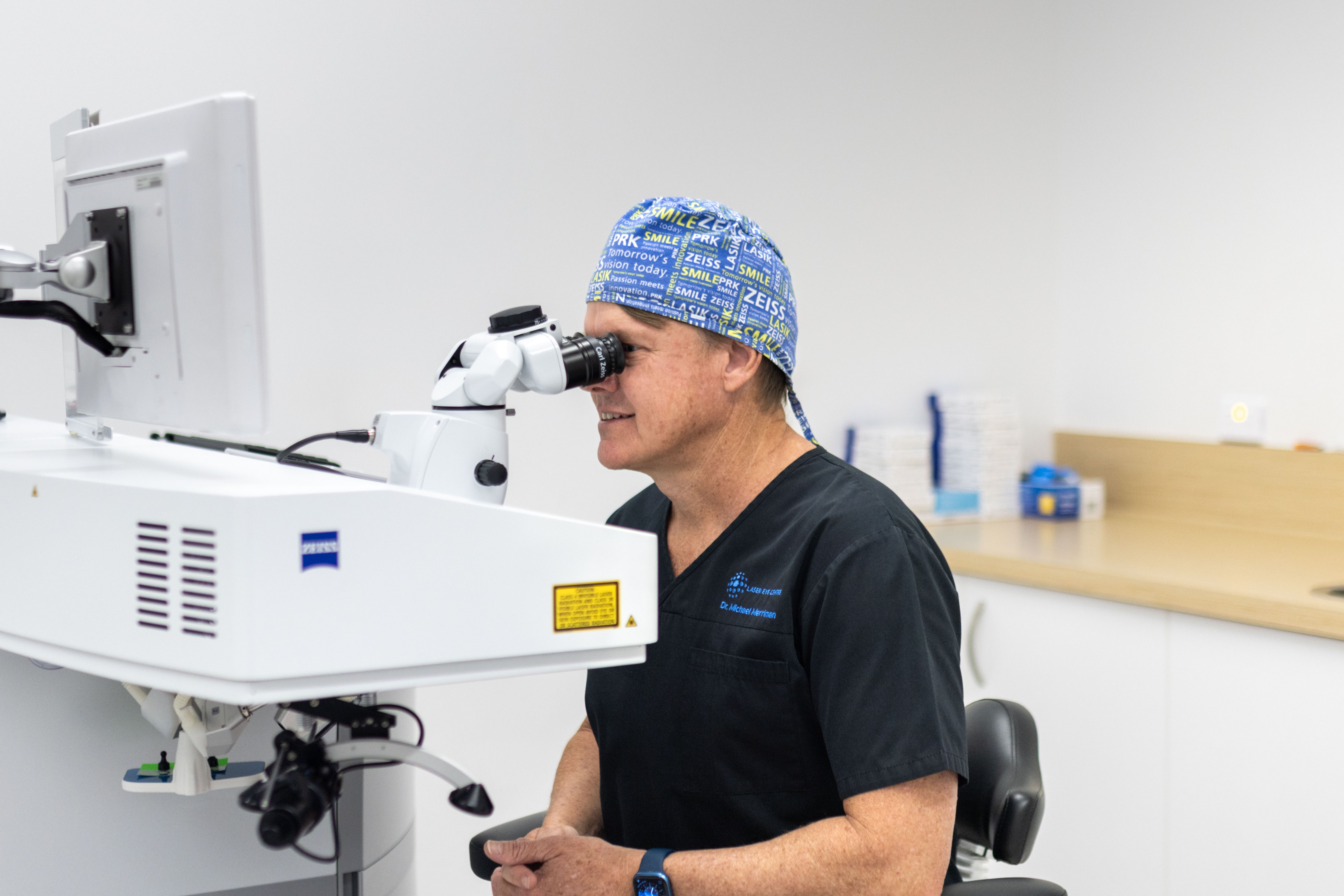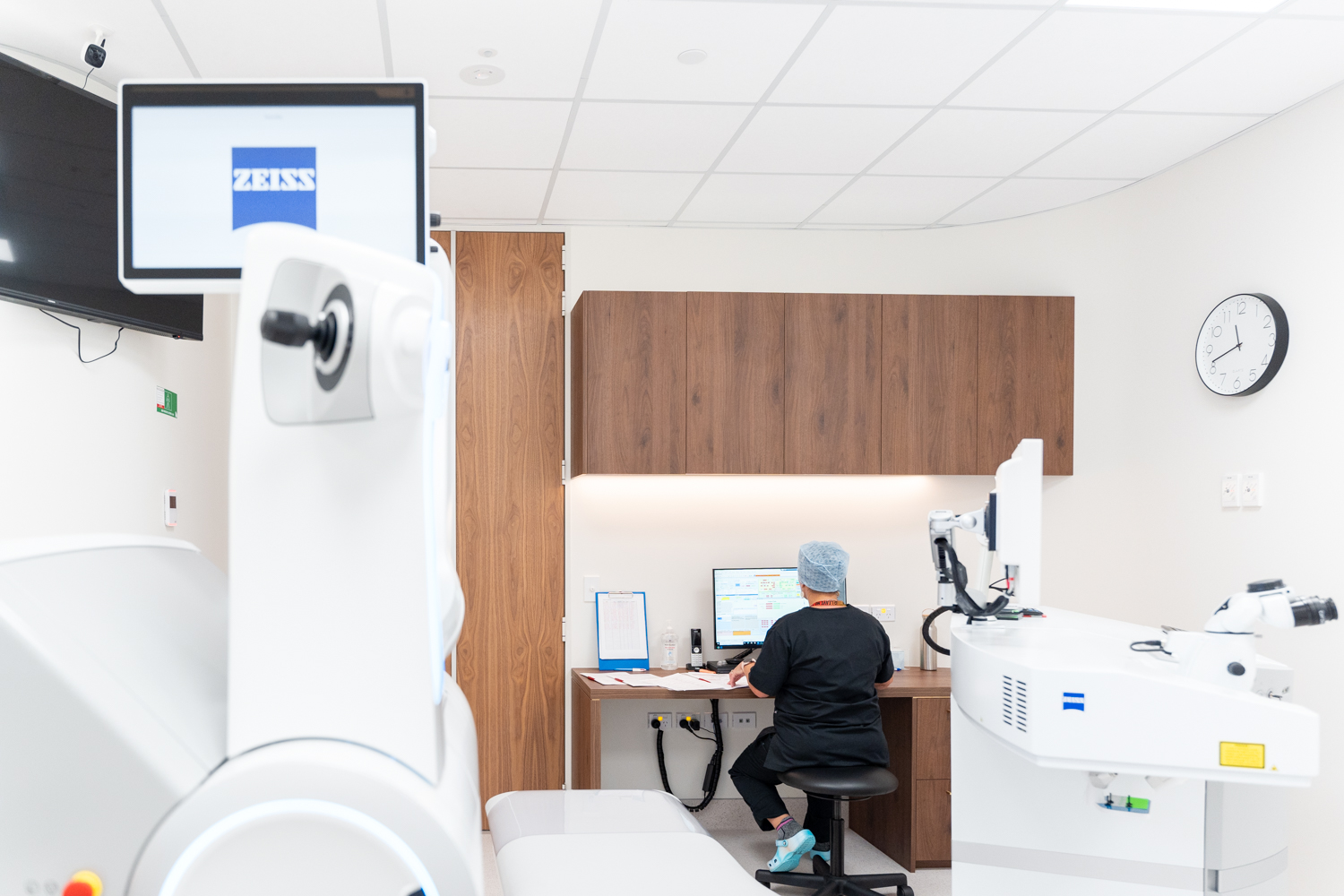Crosslinking

Corneal Crosslinking (CXL): Strengthen Your Vision, Halt Keratoconus Progression
Is your vision changing? Corneal Crosslinking (CXL) might be the answer.
If you’ve been diagnosed with keratoconus or corneal ectasia, you may have noticed your vision becoming blurry, distorted, or difficult to correct with glasses. Left untreated, these progressive eye conditions can significantly affect your quality of life.
Corneal Crosslinking (CXL) is a breakthrough treatment that helps strengthen your cornea and stop vision loss in its tracks, before it gets worse.
What Is Corneal Crosslinking (CXL)?
Corneal Crosslinking is a minimally invasive outpatient procedure designed to halt the progression of keratoconus and corneal ectasia. It works by stiffening the cornea, mimicking the natural collagen cross-links that develop with age.
- A non-invasive procedure that strengthens the cornea using vitamin B2 (riboflavin) and controlled UV light.
- Helps stop or slow the progression of keratoconus and other corneal weakening conditions.
- Aims to preserve your vision and reduce the need for more invasive treatments like corneal transplants.
How it Works:
- Step 1: Riboflavin (Vitamin B2) eye drops are applied to the cornea.
- Step 2: Controlled ultraviolet (UV) light is used to activate the drops.
- Result: Stronger collagen bonds form in the cornea, stabilizing its shape and preventing further thinning.
Benefits of Corneal Crosslinking (CXL):
Stops or slows down keratoconus and ectasia
May improve corneal shape over time
Can enhance vision when combined with other treatments
Who Is a Good Candidate for Corneal Crosslinking (CXL)?
You may benefit from Corneal Crosslinking (CXL) if you:
- Have been diagnosed with progressive keratoconus or corneal ectasia
- Notice recent changes in your prescription or blurry vision
- Have been advised by your eye doctor based on corneal scans or topography
- Want to prevent worsening vision and preserve your sight
What to Expect During the Procedure
At our Laser Eye Centre, Corneal Crosslinking (CXL) is performed as a comfortable, day surgery procedure:
- Local anaesthesia (eye drops only, no injections)
- You’ll lie flat for about 40–60 minutes
- The top layer of your cornea (epithelium) is gently removed
- Riboflavin drops are applied
- A UV light is shone on your eye for 15 minutes
- A bandage contact lens is placed to help healing
Most patients feel little to no pain during the procedure.
Benefits of Crosslinking with us:
- Expert care – Your treatment is performed by an experienced team specialising in corneal conditions.
- Trusted track record – Backed by over 35 years of clinical experience in preserving and protecting vision.
- Leading-edge technology – We use state-of-the-art Zeiss equipment to ensure safe, accurate, and effective results.
Recovery After Corneal Crosslinking (CXL)
- Mild discomfort or light sensitivity for 2–3 days is normal
- A bandage contact lens is worn for 5–7 days
- Use prescribed eye drops to prevent infection and support healing
- Avoid rubbing your eyes, swimming, or using hot tubs during recovery
- Most patients can return to work and normal activities in about a week
Frequently Asked Questions (FAQs)
1. What conditions does Corneal Crosslinking (CXL) treat?
Corneal Crosslinking (CXL) is used for keratoconus and corneal ectasia, including cases that occur after LASIK or other surgeries.
2. Will it improve my vision?
Corneal Crosslinking (CXL) is designed to stop further vision loss, but some patients experience improved corneal shape and vision—especially when combined with treatments like topography-guided laser correction.
3. Is the procedure painful?
No. You’ll receive numbing drops, so the procedure itself is not painful. Mild discomfort may occur during healing.
4. How long does the procedure take?
About 40–45 minutes per eye (30 minutes for drops, 15 minutes for light treatment).
5. Can both eyes be treated at once?
Usually, one eye is treated at a time. A second treatment may follow in a few weeks if needed.
6. How long do the effects last?
Corneal Crosslinking (CXL) can stabilize the cornea for 5–10 years or more. Many patients only need one treatment.
7. Are there any side effects or risks?
Most are mild and temporary, such as:
- Light sensitivity
- Blurry vision
- Gritty feeling
- Infection risk (preventable with drops)
- Changes in glasses/contact lens prescription
8. What should I avoid after the procedure?
- Rubbing your eyes
- Swimming or hot tubs
- Excessive screen time or driving (if vision is blurry)
- Not following your eye drop regimen
Where We’re Located
Whether you live in the Auckland, Waikato, Bay of Plenty, or Central & Lower North Island, vision advice is never far away:
Hamilton
New Plymouth
Tauranga
Pukekohe
Taupo
Why Choose Us for Corneal Cross-Linking (CXL)?
- Performed by experienced corneal specialists
- State-of-the-art technology in a comfortable, outpatient setting
- Personalized care before, during, and after treatment
- Proven results with patient-centred outcomes
Take Control of Your Vision — Before It Gets Worse
Book your free vision assessment today to find out if Corneal Crosslinking Surgery is right for you.
Phone: 0800 733 2020 or book online here

Ready to See Clearly?
Join thousands of New Zealanders who’ve trusted Laser Eye Centre Hamilton to transform their vision.



